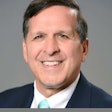
There's an old adage, "If you fail to plan, you plan to fail." This is especially true in marketing and advertising.
 Jake Dold.
Jake Dold.Effective marketing is the foundation for successful advertising. Understanding that principle starts with differentiating between the two disciplines:
- Advertising -- Advertising is how you bring awareness of your practice and services to your potential patients. Think of it as the way you get your message in front of patients, e.g., using online ads, websites, social media, and direct mail.
- Marketing -- Marketing refers to your big-picture strategy. It answers several broader questions, such as those below:
- Who is your target audience?
- What kind of services will you provide?
- How will you structure your pricing?
- How will you promote your practice?
Ultimately, advertising is a result of your marketing strategy. That means crafting an effective advertising strategy requires you to first have an effective marketing strategy.
The following are five recommendations to consider when building a winning marketing strategy.
1. Know your target audience
Everyone has a mouth, so isn't everyone your target audience? The simple answer is no. A target audience is the portion of consumers your practice directs its attention and services toward, and it is typically your ideal patient.
Here's an exercise to help you identify the right target audience for your practice:
- On a piece of paper, draw two vertical lines to create three columns.
- In the first column, write down the names of your top three to five favorite patients.
- In the middle column, write everything you like about those patients.
- In the last column, write the most common characteristics those patients share.
Based on the third column, you can build a brand persona, which is a snapshot of your ideal patient who embodies your target audience. A brand persona is critical because it provides demographic and psychographic details, including your audience's age, location, job title, income, challenges, interests, dreams, and whatever else is necessary to paint a mental picture of your target market.
2. Define and stay true to your business model
How many other dental practices are in your town? How about on the same street? Your competition is a critical reminder that people have choices and are sometimes willing to travel many miles to receive quality dental care. For patients to see the benefits of walking into your practice, you need a unique selling proposition (USP), something that sets you apart and appeals specifically to your target audience.
A USP will give clarity on how you interact with patients and what you should say in your advertising. Some examples include the following:
- Accessibility -- Are your services more financially accessible compared to other dental practices?
- Availability -- Do you offer extended hours or take emergency calls during nights and weekends?
- Advanced technology -- Does your team offer the highest quality materials on the market?
- Phenomenal service -- When treating patients, do you go above and beyond? Do you offer massage chairs and warm towels to help patients relax and feel like royalty?
- Skillset -- Do you offer complex cosmetic and restorative services that go beyond the scope of a typical general dentist?
- Awards and industry recognition -- Have industry peers acknowledged your practice, your expertise, or your great treatments?
While it may be tempting to select multiple USPs, picking just one or two is critical. Defining what makes your practice unique will drive you to excel in those areas and concisely articulate your messaging to prospective patients.
3. Know your limitations
Dental marketing is rife with limitations. Some of the most obvious are listed below:
- Budget -- A single, small practice won't have a million dollars to hire a celebrity brand ambassador and do multiple TV ads and radio spots.
- Geographic location -- TV ads on local stations aren't always viable if a practice's patients typically live within a five-mile radius of the practice.
- Message's tone -- Unlike brands in nonclinical industries, dental practices shouldn't have over-the-top messaging. Instead, the tone should convey a sense of confidence, so patients trust they're going to a medical professional, not an entertainer.
These constraints don't define a practice's success. However, they do provide insight into what's achievable. That's why it's essential to document your practice's unique limitations so you can focus your strategy within your actual resources and capabilities.
4. Determine specific goals
You can't reach a destination if you don't know where you're headed. When determining your practice's marketing objectives, set goals that are specific, measurable, attainable, relevant, and time-bound (SMART).
An example of a SMART goal is to increase your practice's website traffic by 10% within 90 days. This type of objective clarifies what needs to be achieved and the time frame in which it needs to happen. With this insight, you can start developing an advertising plan to help accomplish the goal. By assessing different media and channels, you can determine the most beneficial strategy for hitting your target.
5. Have a clear message
After identifying your audience, business model, limitations, and goals, what message should you deliver to your ideal patient base? Knowing the primary message you want to communicate to your target audience will determine what you say on social media, in email copy, and of course, in advertisements.
But how do you determine the best message to give? First, know that your message should resonate with your audience. That means it needs to be attention-grabbing, engaging, understood, and most importantly, successful in getting your audience to act. One way to achieve this is to speak to your target market's specific pain points and quickly explain how and why your practice can help.
Marketing informs meaningful advertising
Developing a detailed and actionable marketing strategy isn't easy. It requires time, intentional thinking, and the ability to take a deeper look at your practice. However, with a solid marketing strategy, your practice will have the foundation it needs to create engaging advertisements that generate lasting results.
Jake Dold is the chief marketing officer of Apex Dental Partners, a dental support organization providing administrative support services to dentists focused on long-term relationships and high-quality care. Through its nonbranded model, Apex offers supported dentists an increased level of personal and professional flexibility, business support, and a patient-centric culture. Jake leads the marketing team in an effort to attract the right type of patients for each supported office.
The comments and observations expressed herein do not necessarily reflect the opinions of DrBicuspid.com, nor should they be construed as an endorsement or admonishment of any particular idea, vendor, or organization.



















